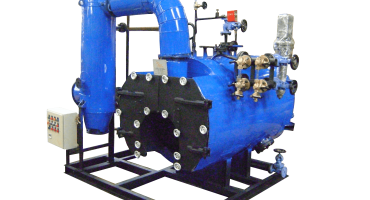Fuel for Future: Uses and Facts on Biomass Fuel
Biomass is one of the fastest-growing sources of fuel in the world. Biomass fuel or biofuel is derived from organic matter like plants or animals. One of the most important factors of biomass fuel is that it is carbon neutral as the carbon dioxide is extracted from the organism during its life cycle. It results in preventing the additional release of carbon dioxide during combustion. For instance, trees require carbon dioxide for photosynthesis, leading to the absorption of carbon dioxide from the atmosphere. While burning wood, the carbon dioxide is released back into the environment while the oxygen is extracted for the burning process. Therefore, biomass fuel does not cause any environmental loss and is an ideal renewable energy source. Similar to biomass, biogas is a renewable source of energy.
There are various ways to obtain biomass fuel of natural energy. It is noteworthy that the industries using wood as fuel do not usually cut the entire tree but use waste products such as rotten wood, branches, or leaves. These waste products are crushed and transported to biomass power plants. Biomass is also produced by growing it specifically for fuel purposes.
How is energy produced using biomass?
The biomass fuel is burned to convert water to steam, used further for heating in process plants or to produce electricity. Biomass is either burned directly or can be converted to biogas or biofuel like ethanol and biodiesel that are burned for energy. Biodiesel is usually used in vehicles and is derived from vegetable oil and animal fats.
Biomass pellets are a popular biofuel produced by compressed organic matter. Due to its smaller size, it is easy to transport and can be fed automatically to the burner. The high density and low moisture content in the biomass pellet result in effective and complete combustion.
On the other hand, biogas is produced from the same organic matter as biomass. However, unlike biomass, biogas results from fermentation, produced during a multi-stage process of anaerobic micro-bacterial degradation of organic substances, also known as anaerobic digestion. The process takes place in special containers called digesters that lack oxygen, thereby producing gas as a result.
The gasses produced are CO2 (35%) and a significant amount of harmful greenhouse gasses like Methane (65%). However, it is not passed into the atmosphere as it is burned in a digester to produce energy. After the required processing, biogas is an ideal alternative for natural gas. The digested material is used later for compost.
Facts on Biomass Fuel:
Biomass is a vital fuel to replace with coal, as well as to promote the local economy. Here are some of the facts on renewable and sustainable biomass fuel.
- Biomass fuel used for power and heat generation replaces coal, natural gas, and other fossil fuels, maintaining carbon neutrality. Due to this, the high demand for wood results in the growth of more trees, absorbing even more carbon.
- Forests provide carbon storage for the long-term with various valuable products, and fuel for heat and power generation that reduces the spread of wildfires.
- Wood-based biomass decreases wildfire risk by using fallen or dead trees that may cause wildfires.
- Wood biomass converted to pellets by drying low-value wood is ideal in replacing high-polluting coal at existing energy and heat facilities.
- Strong demand for forest products such as the additional value of selling low-value wood for biomass is an important reason to grow forests. Higher demand for forest products entices in maintaining and investing in forest productivity to increase supply, resulting in more growth of forests.
- Since biomass is locally produced, harvested, and processed, it provides an economic boost in rural areas.
- About 32% of the total primary energy use in India is derived from biomass with more than 70% of the population depending on it for its energy needs.
- Primary biomass materials used for power generation include bagasse, rice husk, straw, cotton stalk, coconut shells, soya husk, de-oiled cakes, coffee waste, jute wastes, groundnut shells, sawdust, etc.
- Around 450-500 liters of biogas are produced from 1 kilogram of organic material. The residue after decomposition is a good fertilizer or manure.
- India has targeted 175 GW of alternative energy by 2022
Biomass in India:
India has ample biomass reserves, estimated to be around 500 million metric tons per year, with over 120 to 150 million metric tons used for energy production. The government of India plans to generate 50000 MW of electricity from biomass. Advancement in biomass energy production in India will help both rural and urban areas with social and economic benefits. Biomass is also a cost-effective and ecologically friendly energy source, ensuring more conventional techniques of production as well as an efficient and sustainable method of manufacturing. The demand for biomass energy is expected to increase by 2025. Due to population growth, increased industrial use, and technological advancements improving biomass fuel or the conversion of biomass fuel into effective energy carriers, it is predicted that the demand for biomass energy would significantly increase by 2025.
Rakhoh’s Biomass Boilers:
Rakhoh Boilers has been a leading boiler manufacturer since its inception in 1983. We manufacture efficient and reliable industrial boilers that ensure effective combustion with biomass fuel. Our biomass-fired boilers include Solid-fuel Bi-Drum, Combo X, Membrane X, Optipac, and Huskon.
For more details on our products and services, visit www.rakhoh.com
- Published in Boiler
An Overview of Advantages and Disadvantages of Biomass Boilers
Biomass Boilers are emerging as the preferred choice of boilers for manufacturing and process industries globally. With the rapid increase in the costs of fossil fuel, it has become challenging to procure it. Additionally, a higher rate of greenhouse emissions and the anticipated depletion of fossils in the next two to three decades have contributed to biomass fuel being the ideal alternative to non-renewable fuels. Biomass fuels are biological materials derived from living organisms like plants that can be used in different ways. It can either be used directly through combustion to produce heat or indirectly after converting it to various fuel types such as methane gas, ethanol, and biodiesel.
About Biomass Fuel:
Wood is the most widely used biomass fuel used in the form of logs, pellets, or wood chips. Although it is challenging to switch from a conventional fossil fuel system to a renewable fuel such as biomass, we at Rakhoh Boilers endeavor to assist the industries by discussing the advantages and disadvantages of biomass boilers in detail. Listed below are some of the noteworthy advantages and disadvantages of biomass fuels/biomass boilers,
Advantages of Biomass Boilers:
- Reduction in Carbon Emissions:
Compared to fossil fuels, biomass fuels generate a fraction of the carbon emissions. The combustion process of fossil fuel releases carbon into the environment, stored inside the fuel since millions of years ago. On the other hand, the combustion of biomass fuels releases the same amount of carbon, consumed by the living plant. It results in the carbon levels being consistent and sustainable.
- Boosts Local Business:
Biomass fuel can greatly boost the local economy and significantly reduce the transportation costs for fuels. Resultantly, it also decreases the emission caused by transporting the fuels to the process industries. Biomass fuel includes wood, agricultural wastes, animal manure, etc. that can prove beneficial to the local economy, especially in rural areas by selling the wastes they would have otherwise disposed of by burning it.
- Biomass Boilers Delivers Higher Efficiency:
Biomass boiler systems offer high combustion efficiency and reduced emission levels. With the advancement in biomass boilers, it can operate up to 90% efficiency that is vastly higher than conventional boilers and electric heating systems. Biomass boilers are highly efficient as it does not lead to fuel and heat wastage with easy disposal of ash and the CO2 created through the combustion process is equivalent to that consumed by the tree/plant matter.
- Integration with Other Heating Systems:
Not only are biomass boilers capable of replacing entirely with existing fossil fuels like gas, oil, LPG boilers, but they can also be integrated with a gas boiler. Biomass is considered the best alternative in co-firing plants using coal. As biomass and coal are both excellent sources of fuel, it is ideal for co-firing. It is essential to use at least 10% biomass to decrease the levels of CO2 emissions.
- Cost-Effective:
As the fuel used in the boiler systems is sourced locally, the fuel cost remains more stable. However, prices of fuels like gas and oil are more likely to fluctuate. Various global issues like war, natural disasters, and political changes can impact the prices of fossil fuels. Additionally, industries based in rural locations can procure wood to feed their biomass boilers.
- Renewable Source of Energy:
Biomass fuels are renewable energy sources as they can be replaced with the organic matter by the plantation of new trees. The majority of the wood used in biomass boilers comes from logging and sawmills. It is ideal to use crops that are regrown within one season to maintain the carbon emission level.
Disadvantages of Biomass Boilers:
- Requires More Space:
Biomass boilers are significantly bigger than fossil fuel boilers and require larger space for installation.
- Space for Fuel Storage:
Before installing a biomass boiler, it is necessary to ensure that the process plant has enough space to store the fuel source. It is equally important to store the fuel in a dry place to maintain its quality.
- High upfront cost:
Although biomass boilers are economical to operate due to their fuel, the boiler itself costs around 10 times more than a more conventional gas-fired boiler.
- Requires annual maintenance:
The maintenance required varies depending on whether the process plant uses a manual or automatic biomass boiler. Manual biomass boilers require cleaning of ash every week, whereas automated boilers offer self-cleaning.
- Labor Intensive:
As wood needs to be fed continuously into the system, it leads to a more labor-intensive task than other boilers. Additionally, frequent cleaning is another aspect that requires manual attention.
Conclusion:
Rakhoh Boilers are the leading boiler manufacturers in Pune since 1983. Over our journey of 38+ years, we have manufactured efficient and reliable industrial steam boilers for over 20 process industries. Our range of biomass boilers includes Solid Fuel Bi-Drum, Combo X, Membrane X, Optipac, and Huskon that provide optimal efficiency and effective combustion with various biomass fuels.
To learn more about our products and services, visit www.rakhoh.com
- Published in Boiler








